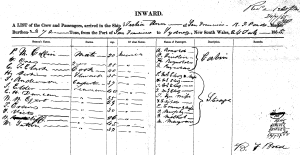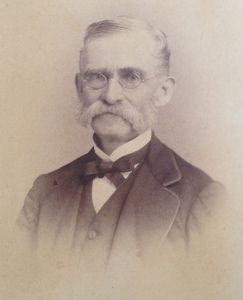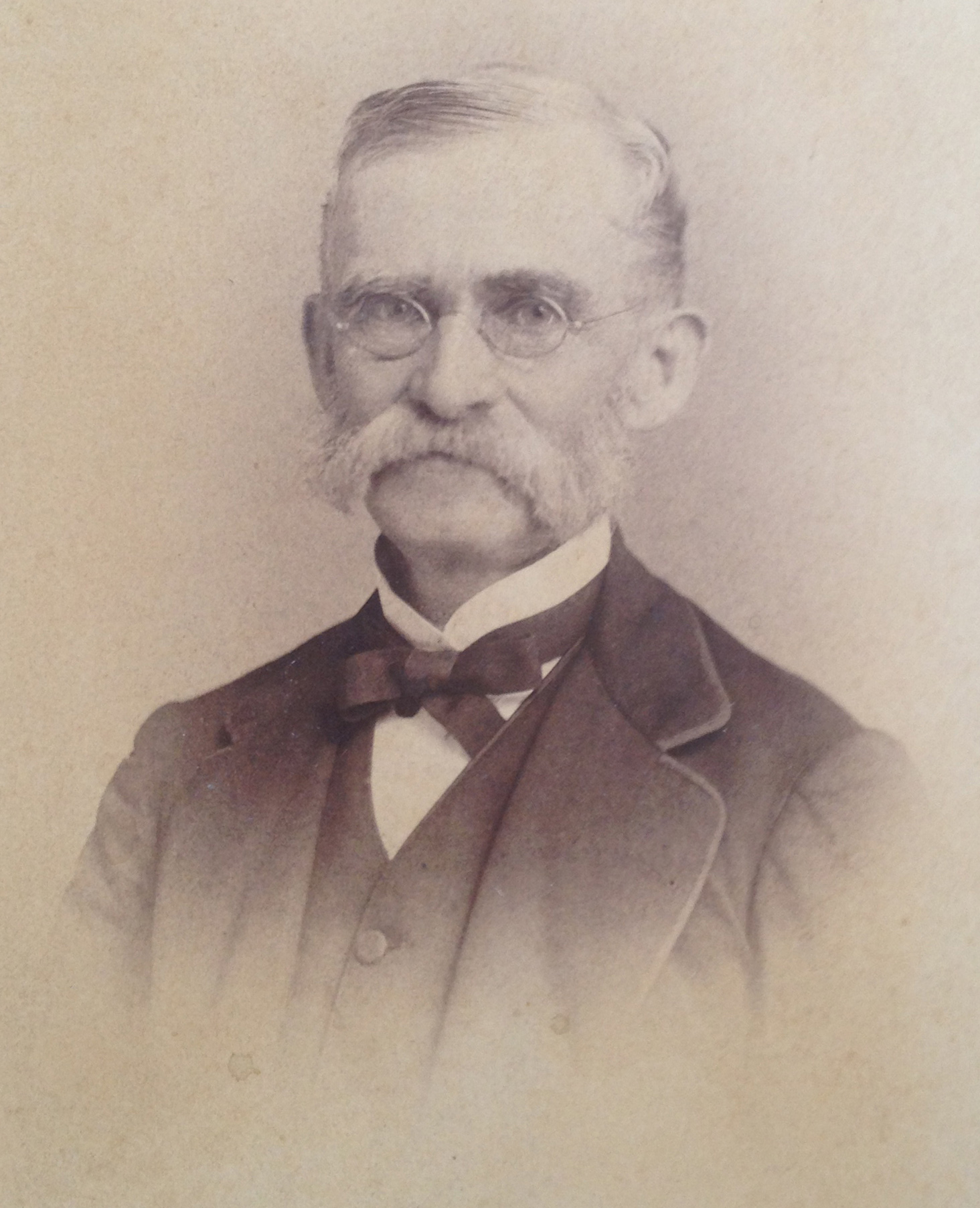On 4 October 1855, after sailing twenty-six days in the Pacific Ocean, a vessel with 39 passengers and 17 crew aboard, ran into a submerged reef about 200 miles off the coast of Tahiti ultimately destroying the ship. Of the 39 passengers on board, 28 were Latter-day Saints, converts from Australia, on their way to Zion in Utah. The accident would claim the lives of five of those precious Saints – two women and three children.
The Voyage of the Julia Ann
Between 1840 and 1890, approximately 90,000 Latter-day Saints traveled east to west from Europe to America via a total of 543 oceanic voyages. Although shipwrecks were a common occurrence in the nineteenth century, none of the Atlantic ships carrying Latter-day Saint converts were reported among those that went down. However, little is known about the vessels that brought converts from the west to the east across the Pacific. The story of the Julia Ann, the only vessel known with Mormon passengers where lives were lost due to a shipwreck, is one such case.
 The Julia Ann left Sydney Australia on 7 September 1855, under the command of 32-year-old Captain Benjamin F. Pond, the co-owner of the vessel. The Saints sang “The gallant ship is under weigh,” a hymn written by the famous LDS poet and hymn writer W. W. Phelps, as the ship left port. Captain Pond being impressed with the passage of Australian Latter-day Saints to America the previous year was eager to be of service once again. The LDS Australian periodical, Zion’s Watchman, reported that Pond and others had certified “that they never saw business more correctly and expeditiously transacted, than was the business pertaining to the shipment of that company, and they also stated that they never saw a company that were so easy to be governed, by the voice of one man as that company of Saints were, who, they remarked, were always ready to hear and obey my counsel.”
The Julia Ann left Sydney Australia on 7 September 1855, under the command of 32-year-old Captain Benjamin F. Pond, the co-owner of the vessel. The Saints sang “The gallant ship is under weigh,” a hymn written by the famous LDS poet and hymn writer W. W. Phelps, as the ship left port. Captain Pond being impressed with the passage of Australian Latter-day Saints to America the previous year was eager to be of service once again. The LDS Australian periodical, Zion’s Watchman, reported that Pond and others had certified “that they never saw business more correctly and expeditiously transacted, than was the business pertaining to the shipment of that company, and they also stated that they never saw a company that were so easy to be governed, by the voice of one man as that company of Saints were, who, they remarked, were always ready to hear and obey my counsel.”
According to the Meridian Magazine article titled “The Pioneer Story You’ve Never Heard: The Wreck and Rescue of the Julia Ann” by Fred E. Woods, Captain Pond recalled that the first two weeks of the voyage were “exceedingly unpleasant” with “head winds accompanied with much rain.” However, upon entering the southeast trades, “everything brightened, promising a speedy and pleasant voyage.” That brief period of tranquility, however, proved to be the calm before the storm.
According to the Meridian Magazine article, John McCarthy, one of the crew members, recalls that on 4 October 1855, “as the ship was sailing at 11 ½ knots per hour, the sea became broken up and the boat with a tremendous crash, dashed head on to a coral reef. She immediately swung round with her broadside to the reef, and the sea made a complete breach over her at every swell.”
Shipwrecked
The Meridian Magazine article continues with the recounting of the incident by one of the passengers, Andrew Anderson, the second missionary to Australia in the early 1840s:
About half-past eight o’clock she struck on a reef. . . . This was an awful event in our lives. There was four of our children asleep and in bed; there was very few in the steerage, chiefly on the steerage house, poop, &c. I had been asked two or three times why I was not out,—was I well enough? Yes, well enough thank you, but lazy or something else, (it seems a foreboding of what took place,) there was Sister Harris, Sister Logie, my wife and myself in the steerage house at the moment the Julia Ann struck, my wife ran to me and said what shall we do, I said I do not think there is much the matter, compose yourself. Mr. Owens, 2nd mate, came in and told us to compose ourselves and remain as we were. . . .
Word came out from someone for the passengers to go to the cabin, and by the time I got the four children out of bed, the water was knocking about the boxes, I got my leg very much bruised with a large box, with difficulty we gained the cabin, and about ten minutes after we left, house, galley, and box was all over board, preparations were made to go on the rocks to ascertain whether we could get any footing, as there was no land in sight, the ship was breaking up fast.
Getting Everyone to Safety
 According to the Meridian Magazine article, as the ship was rapidly breaking apart, Captain Pond “called for a volunteer to attempt to reach the reef by swimming with a small line. One of the sailors instantly stripped; the log line was attached to his body, and he succeeded in swimming to the reef. . . . By this means a larger line was hauled to the reef, and made fast to the rocks.” Many of the passengers were able to escape from the damaged ship to the reef by hanging on to the rope, but two women and three children drowned in the process.
According to the Meridian Magazine article, as the ship was rapidly breaking apart, Captain Pond “called for a volunteer to attempt to reach the reef by swimming with a small line. One of the sailors instantly stripped; the log line was attached to his body, and he succeeded in swimming to the reef. . . . By this means a larger line was hauled to the reef, and made fast to the rocks.” Many of the passengers were able to escape from the damaged ship to the reef by hanging on to the rope, but two women and three children drowned in the process.
The article continues with Peter Penfold’s account of the 5 Latter-day Saint passengers who were drowned during the escape:
Sister [Martha] Humphries, and sister [Eliza] Harris and infant, were drowned in the cabin. Little Mary Humphries and Marian Anderson were washed off the poop and drowned. . . . After I had helped to get them all out of the cabin, I came up and found the vessel all broken into fragments, except the cabin, and into that the water was rushing at a furious rate, sweeping out all the partitions.
Throughout the entire ordeal Captain Pond’s concern was for the safety of the passengers and crew. The article recounts a noble act by Captain Pond during the episode:
While the crew were engaged in getting the passengers ashore, Mr. Owens, the second mate, was going to carry a bag containing eight thousand dollars belonging to the Captain, ashore. The Captain ordered him to leave the money and carry a girl ashore; . . . the child was saved, but the money lost.
Castaways in Hope of Rescue
 The nearest land was 10 miles away. The survivors were able to patch up a row boat and assemble a raft from spars and drift wood. Led by Captain Coffin, the women and children were placed into the boat, and the men remained on the reef for a second night.
The nearest land was 10 miles away. The survivors were able to patch up a row boat and assemble a raft from spars and drift wood. Led by Captain Coffin, the women and children were placed into the boat, and the men remained on the reef for a second night.
The next morning provisions and clothing were placed on rafts, and the men swam and waded beside them along the reef. All the while they were being pursued by a school of sharks and often had to seek safety by climbing upon the rafts. They were finally able to reach the island after two days without any food or water where they were greeted by children who took them to a water supply which came from holes dug beneath the coral sand. Three days later, Pond led an exploring party to look for more provisions to sustain the castaways. They would spend two months on a series of islands with shell fish, turtle, sharks, cocoa nuts, and brackish water for their sustenance. They also planted a garden to grow pumpkins, peas, and beans.
In spite of their hardships, the Saints still held worship services on a regular basis.
After eight weeks of being stranded on the Scilly Islands, Pond and 9 brave men launched out in a boat which they had repaired to find help. Their destination was the Society Islands which were 200 miles away.
A Missionary’s Dream and the Providence of God
In his autobiography which was published four decades later, Pond recounted the prophetic dreams of a Mormon Elder which were instrumental in guiding the 10 man crew in the direction they were to go to seek safety. The dreams are included in the Meridian Magazine article:
My passengers were mostly Mormons, bound to Salt Lake City, densely ignorant and very superstitious and were bitterly opposed to my first proposition of trying to reach the Navigator Islands. They argued, the distance to be so great, some fifteen hundred miles, that if we succeeded in reaching them they would starve to death before we could hope to send them relief. They could not, or would not understand why we might not steer in face of head wind and sea to the Society Islands which were so much nearer. We, however, as nautical men, determined to act on our own judgment in that matter, and steadily continued our preparations until our plans were blocked in a most unexpected manner.
One of their Elders had a dream or vision. He saw the boat successfully launched upon her long voyage, and for a day or two making satisfactory progress. Another leaf in the vision, and the boat is seen floating bottom up, and the drowned bodies of her crew floating around her. This tale, so wrought upon the superstitions that not a man would volunteer to go with me, and I was reluctantly compelled to change my plan.
After some days the same Mormon Elder came to me having had another vision. I asked him if it was a good one. Yes, a very good one. He saw the boat depart with a crew of ten men, bound to the eastward; after three days of rowing, they reached a friendly island where a vessel was obtained and all hands safely brought to Tahiti.
The castaways on Scilly Island were rescued on 3 December 1855. The Meridian Magazine article continues with the account of John S. Eldredge who expressed his profound gratitude:
We were delivered from our exiled and desolate situation by the untiring perseverance of Captain B. F. Pond, master of the barque Julia Ann, connected with the charitable good feeling of Captain Latham, master of the schooner Emma Packer, that came to our relief. We were taken off the Scilly Isles, where we were wrecked, on the 3d of December, making it two months that we were left in this lonely situation on an uninhabited island. I need not attempt to describe our feelings of gratitude and praise which we felt to give the God of Israel for His goodness and mercy in thus working a deliverance for us; for I have not language to express my own feelings, much less the feelings of those around me, suffice it to say, I am thankful to know that His mercy endureth forever.
About Keith L. Brown
Keith L. Brown is a convert to The Church of Jesus Christ of Latter-day Saints, having been born and raised Baptist. He was studying to be a Baptist minister at the time of his conversion to the LDS faith. He was baptized on 10 March 1998 in Reykjavik, Iceland while serving on active duty in the United States Navy in Keflavic, Iceland. He currently serves as the First Assistant to the High Priest Group for the Annapolis, Maryland Ward. He is a 30-year honorably retired United States Navy Veteran.


 Watch a video about the restoration of the gospel on lds.org
Watch a video about the restoration of the gospel on lds.org